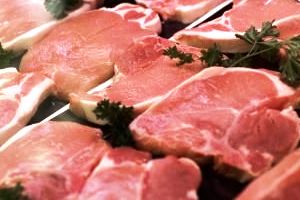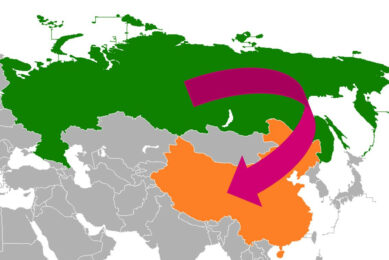Aarhus Uni: Scientists find meat quality biomarkers

Scientists use modern technology to develop tools that slaughterhouses and pig producers can use to predict meat quality. Is the pork meat tender, flavoursome and juicy? It would be a bit help if you had a tool that could predict the quality of the meat with the help of biomarkers.
The farmer could use the tools to select animals for breeding and the slaughterhouse could use the tool to select top-quality carcasses or cuts in a cheap and effective way.
Such a tool could become a reality, says senior scientist Niels Oksbjerg from Aarhus University (AU). Together with other AU scientists he has collaborated with Danish Crown, the Danish Meat Research Institute and a number of international partners to investigate the possibilities of identifying biological markers for different properties that affect the meat quality.
The scientists found markers for meat quality that could be used, so now it is just a matter of developing tools for practical use.
– We are ready to show the industry what we have to offer. The next step will be to translate the biomarkers to tools and to test them at the slaughterhouses, says Niels Oksbjerg, who hopes to be able to obtain funding for this development work.
Fishing through the genome
The results that scientists have generated so far are based on research carried out as part of a huge, five-year EU project – Q-PorkChains – which has involved 62 partners from a large number of countries. The project was launched in 2007 and was completed in December 2011.
In the part of the project we contributed to, we used the new technologies of proteomics and transcriptomics to identify suitable biomarkers for meat quality in pork. The new technologies enable you to study genes and proteins in a larger, cohesive context rather than individually.
“We did not know precisely where to look so we used transcriptomics and proteomics – technologies where a large number of genes and protein expressions can be measured and used to “fish” for markers, explains Niels Oksbjerg.
The scientists received muscle biopsies from the slaughterhouses from different European countries and established a muscle library. And it was this library they used to fish for markers related to quality aspects of meat.
When they found interesting links between genes and meat quality attributes they verified the results at the level of individual genes using a technique called RT-PCR. The results were then validated in other porcine lines. In this way the scientists could confirm if there was a link between a certain gene and a certain attribute.
The meat quality attributes that the scientists investigated were drip loss, colour, juiciness, flavour, intramuscular fat and tenderness. The investigations paid off, but require further development work.
“We have found 16-20 genes that are interesting in connection with drip loss, but the link between individual genes and the attribute is too weak, so the possibility for predicting meat quality is correspondingly weak. Now we would like to develop tools that look at, for example, 6-7 genes at a time. This will give a better expression for the attribute and make the prediction safer,” explains Niels Oksbjerg.
The other participants from Aarhus University in this part of the project are Lecturer Bo Thomsen, PhD student Jeanette Hansen and head of research unit Jette Feveile Young.
The other partners in this part of the Q-PorkChains project were Wageningen University in the Netherlands, INRA and French Hybrid in France, Chinese Academy of Agricultural Sciences in China and Polish Academy of Sciences in Poland. The Q-PorkChains project was fully financed by the EU 6th Framework Programme.
Source: Aarhus University











